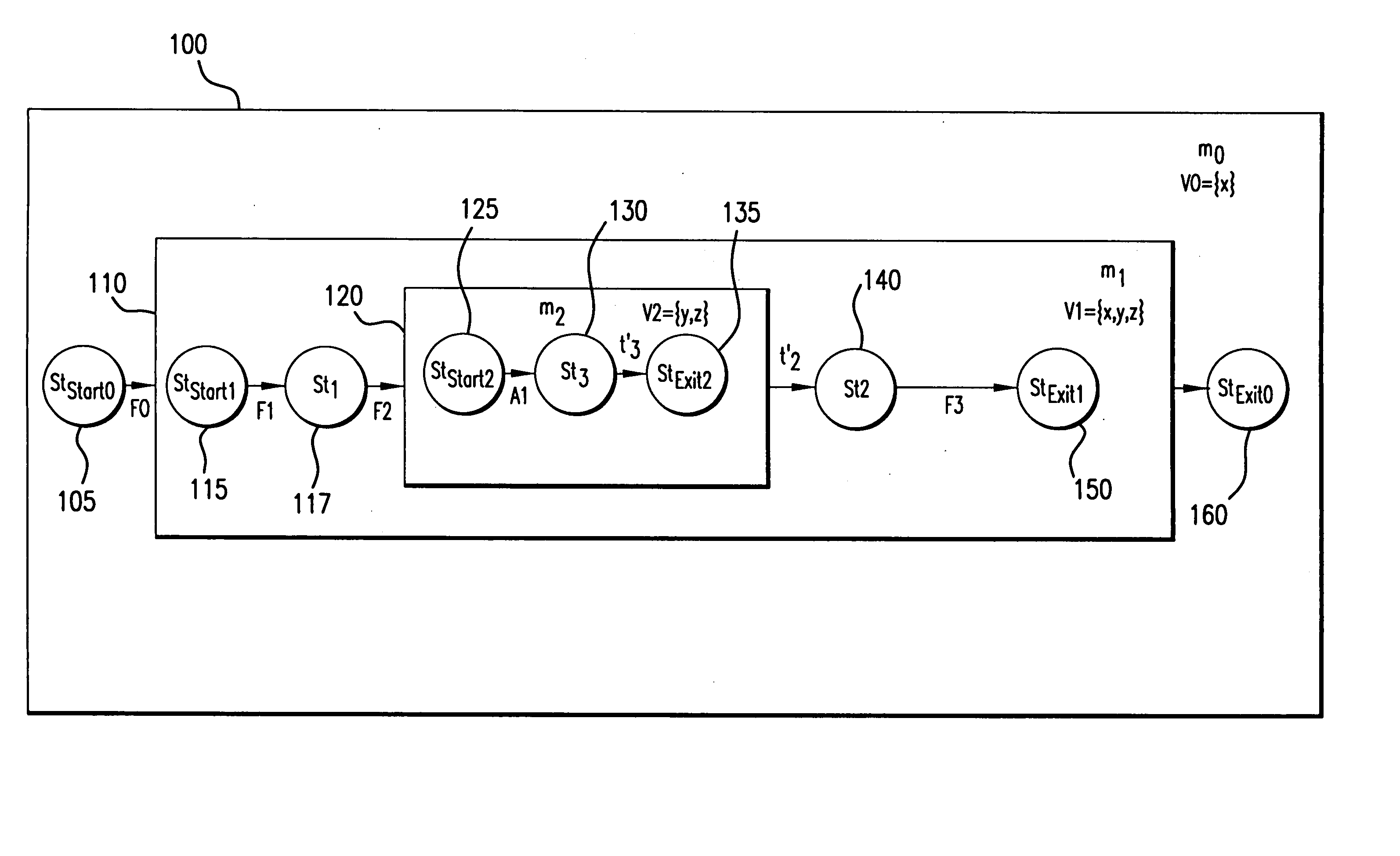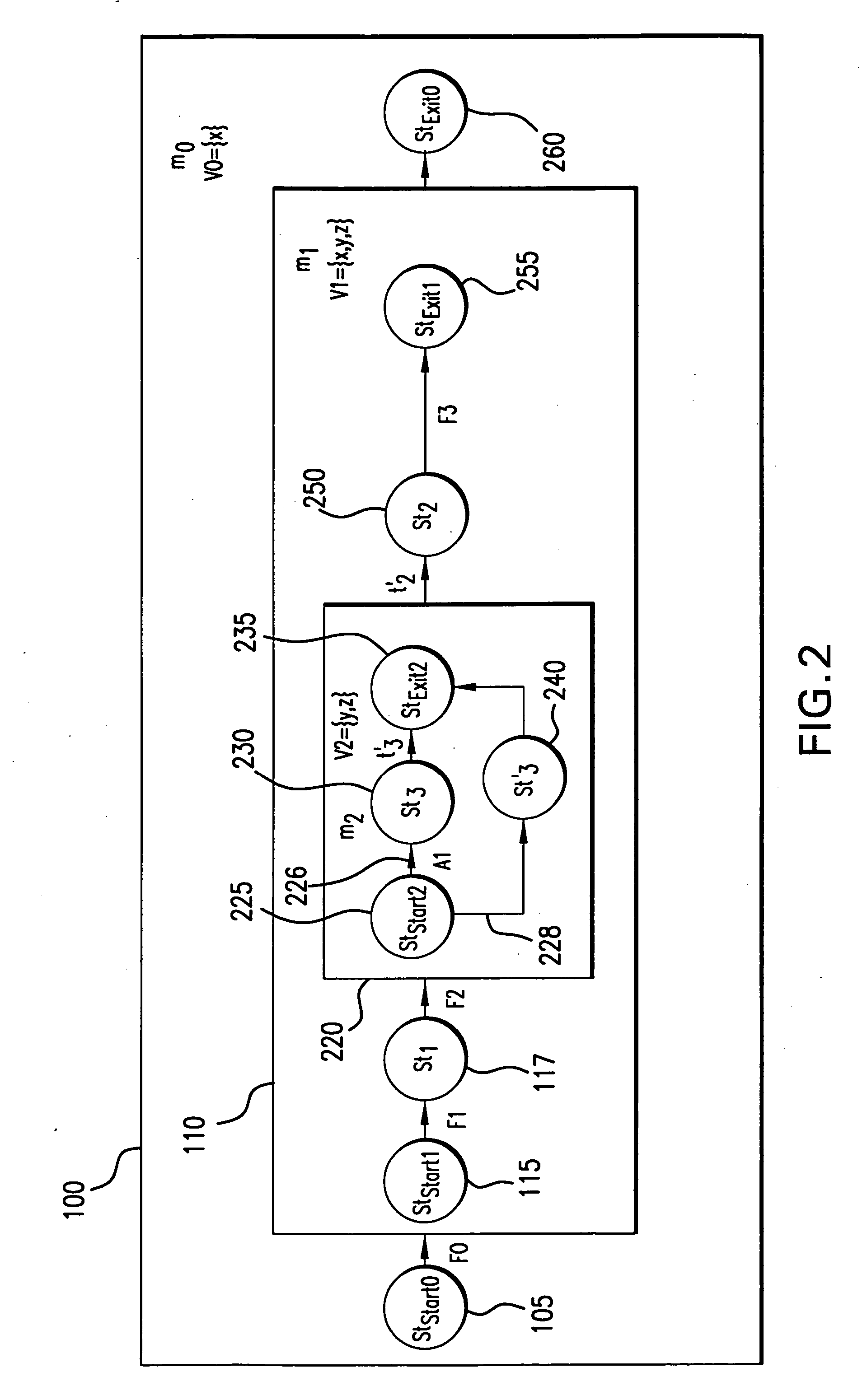Method for domain specific test design automation
a test design and automation technology, applied in the field of automatic design of reliability testing, can solve the problems of explicit requirements, lack of automatic testing of implicit content of specification, and failure to scrutinize all the requirements of a specific problem domain associated with the system under development,
- Summary
- Abstract
- Description
- Claims
- Application Information
AI Technical Summary
Benefits of technology
Problems solved by technology
Method used
Image
Examples
case i
[0057] For the do-notation construct, Order (S)=S′ where S=SDO[F1 . . . Fk] and S′ is the specification reordered by the actual sequence of operation. Thus, S′={F1;F2; . . . ;Fk}.
case ii
[0058] For a composition of functions, Order (S)=S′ where S=SCOMP[F1,F2, . . . ,Fk] and S′={Fk;Fk-1; . . . ;F1;}.
case iii
[0059] For a sequential juxtaposition of functions, Order (S)=S′, where S=SSEQ[F0{F1},F1{G1}, . . . ,Fk]. For a typical specification, a unique start function denoted by F0 is placed at the beginning of the specification. The Order function starts a depth first search (DFS), such as is known in the computing art, from F0 to produce the reordering of functions. Thus, Order (S)=DFS(S, F0)=S′. It should be noted that reordering the sequential juxtaposition of functions unravels the underlying hierarchy in the specification. Thus, S′={F0{F1{G1 . . . ;} . . . ;};}.
PUM
 Login to View More
Login to View More Abstract
Description
Claims
Application Information
 Login to View More
Login to View More - R&D
- Intellectual Property
- Life Sciences
- Materials
- Tech Scout
- Unparalleled Data Quality
- Higher Quality Content
- 60% Fewer Hallucinations
Browse by: Latest US Patents, China's latest patents, Technical Efficacy Thesaurus, Application Domain, Technology Topic, Popular Technical Reports.
© 2025 PatSnap. All rights reserved.Legal|Privacy policy|Modern Slavery Act Transparency Statement|Sitemap|About US| Contact US: help@patsnap.com



